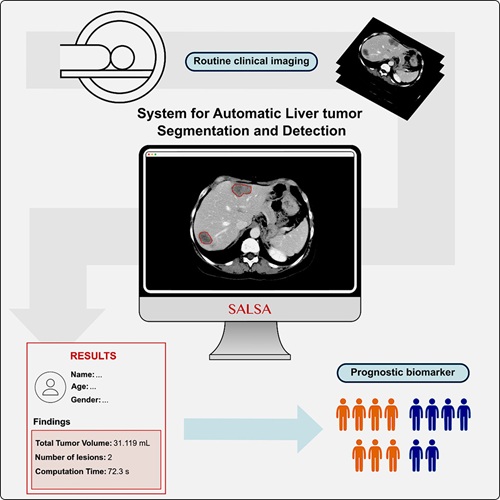Bone Suppression Software with Chest X-Ray Equivalent to Dual Energy Subtraction Imaging in the Detection of Potential Lung Cancer
|
By MedImaging International staff writers Posted on 05 Jul 2012 |
New software considerably enhances the radiologists’ ability to detect potentially cancerous lung nodules in X-ray images, and may become a cost-effective option to dual energy subtraction (DES) imaging, according to two new studies.
The studies’ findings were presented at the 20th anniversary meeting of the European Society of Thoracic Imaging (ESTI), June 22-24, 2012, in London (UK). Riverain Technologies’ (Dayton, OH, USA) ClearRead bone suppression software utilizes machine learning algorithms to convert any conventional chest X-ray image into an enhanced, soft tissue image without the ribs and clavicles that sometimes obscure early lung cancer. DES also creates a soft tissue image but requires a dedicated dual energy imaging system to form it.
Depending on the methodology, DES may require two separate scans, thereby exposing patients to more radiation than conventional X-ray. Riverain’s computer-aided detection (CAD) software, ClearRead +Detect, provides additional support in decision making by circling suspicious areas on a bone-suppressed image that may be lung cancer. Final determination is made by the radiologist.
The first study, conducted at the Institute of Diagnostic, Interventional and Pediatric Radiology at the University Hospital Bern (Switzerland), compared Riverain’s bone suppression and DES alone and in combination with CAD and revealed that the bone suppression software is as good as DES at detecting lung nodules while producing superior image quality.
In the retrospective study, three radiologists independently reviewed chest images of 143 patients: 101 patients with 155 lung nodules between 5-29 mm earlier validated using CT, and 42 subjects with no lung nodules. Each radiologist tagged suspected nodules on each patient’s original chest X-ray image, and individually on DES and bone-suppressed images with and without CAD.
The radiologists detected the most lung nodules in the bone-suppressed image with CAD markings. Their mean sensitivities--the percentage of the 155 lung nodules that were accurately identified--were: 46.9% using traditional X-ray only; 49.2% using a single-shot DES system; 49.7% using SoftView 2.0 (an earlier version of Riverain’s ClearRead bone suppression); and 51.6% using SoftView 2.0 plus OnGuard 5.1 (an earlier version Riverain’s ClearRead +Detect software). The overall diagnostic performance with the modalities was not significantly different.
“These findings are compelling results for hospitals, radiology practices and patients,” said Steve Worrell, Riverain’s chief technology officer. “Radiologists detected as many lung nodules using Riverain bone suppression software on conventional X-ray images as they detected using a dedicated piece of imaging equipment that is more expensive, may expose patients to more radiation, and can only be used in the single location where it is housed. Our software immediately enhances any standard chest X-ray image, after capture, and can be used throughout entire healthcare systems without additional imaging equipment, staff or space requirements, and without any additional tests or radiation dose for patients.”
The radiologists also gave the bone-suppressed images a significantly higher overall quality rating than the DES images. The true-positive and false-positive rates of these two modalities were statistically equivalent. “Electronic bone suppression provides equivalent detection rates for lung nodules as DES, with better image quality, and might be a cost-effective alternative to DES chest radiography in the detection of lung nodules,” said Zsolt Szucs-Farkas, MD, PhD, chief investigator.
Dr. Szucs-Farkas also compared CAD markings before radiologist interpretation to the radiologists’ findings. Whereas CAD and the radiologists detected many of the same lung nodules, each also detected nodules the other did not find. CAD, on its own without any radiologist interpretation (evaluated for research purposes only), accurately circled approximately one in four nodules that the radiologists missed, and the radiologists found approximately one in three nodules that CAD missed.
“Working together, radiologists and our CAD with bone suppression software bring different strengths to the table and significantly improve the detection of nodules that may be lung cancer using conventional chest X-ray,” Dr. Worrell said.
A second study presented at ESTI 2012 also confirmed Riverain’s bone suppression software considerably improves radiologists’ ability to detect lung nodules in chest X-ray images. Eight radiologists from the Radboud University Nijmegen Medical Center (RUNMC; The Netherlands) and the Meander Medical Center (Amersfoort, The Netherlands), reviewed chest X-ray images for 108 patients with only one CT-proven lung nodule and 192 patients without nodules. On average, they found 14.4% of lung nodules using Riverain’s bone suppression technology (SoftView 2.4, now called ClearRead bone suppression) that were missed when they used conventional X-ray alone, without an increase in false-positives. All individual readers improved detection with the help of the bone suppression software. Individual reader results ranged from as low as 52% without bone suppression to a high of 81% with the software. Average detection overall was 67% using X-ray alone, and 72% with bone suppression software.
Riverain Technologies applies proprietary pattern recognition and machine-learning technologies in the creation of software applications for use globally in the healthcare industry. The company’s ClearRead software increases the expert skills of radiologists to improve patient outcomes using standard chest X-ray, without additional radiation dose or procedures for patients.
Related Links:
Riverain Technologies
Radboud University Nijmegen Medical Center
Meander Medical Center
The studies’ findings were presented at the 20th anniversary meeting of the European Society of Thoracic Imaging (ESTI), June 22-24, 2012, in London (UK). Riverain Technologies’ (Dayton, OH, USA) ClearRead bone suppression software utilizes machine learning algorithms to convert any conventional chest X-ray image into an enhanced, soft tissue image without the ribs and clavicles that sometimes obscure early lung cancer. DES also creates a soft tissue image but requires a dedicated dual energy imaging system to form it.
Depending on the methodology, DES may require two separate scans, thereby exposing patients to more radiation than conventional X-ray. Riverain’s computer-aided detection (CAD) software, ClearRead +Detect, provides additional support in decision making by circling suspicious areas on a bone-suppressed image that may be lung cancer. Final determination is made by the radiologist.
The first study, conducted at the Institute of Diagnostic, Interventional and Pediatric Radiology at the University Hospital Bern (Switzerland), compared Riverain’s bone suppression and DES alone and in combination with CAD and revealed that the bone suppression software is as good as DES at detecting lung nodules while producing superior image quality.
In the retrospective study, three radiologists independently reviewed chest images of 143 patients: 101 patients with 155 lung nodules between 5-29 mm earlier validated using CT, and 42 subjects with no lung nodules. Each radiologist tagged suspected nodules on each patient’s original chest X-ray image, and individually on DES and bone-suppressed images with and without CAD.
The radiologists detected the most lung nodules in the bone-suppressed image with CAD markings. Their mean sensitivities--the percentage of the 155 lung nodules that were accurately identified--were: 46.9% using traditional X-ray only; 49.2% using a single-shot DES system; 49.7% using SoftView 2.0 (an earlier version of Riverain’s ClearRead bone suppression); and 51.6% using SoftView 2.0 plus OnGuard 5.1 (an earlier version Riverain’s ClearRead +Detect software). The overall diagnostic performance with the modalities was not significantly different.
“These findings are compelling results for hospitals, radiology practices and patients,” said Steve Worrell, Riverain’s chief technology officer. “Radiologists detected as many lung nodules using Riverain bone suppression software on conventional X-ray images as they detected using a dedicated piece of imaging equipment that is more expensive, may expose patients to more radiation, and can only be used in the single location where it is housed. Our software immediately enhances any standard chest X-ray image, after capture, and can be used throughout entire healthcare systems without additional imaging equipment, staff or space requirements, and without any additional tests or radiation dose for patients.”
The radiologists also gave the bone-suppressed images a significantly higher overall quality rating than the DES images. The true-positive and false-positive rates of these two modalities were statistically equivalent. “Electronic bone suppression provides equivalent detection rates for lung nodules as DES, with better image quality, and might be a cost-effective alternative to DES chest radiography in the detection of lung nodules,” said Zsolt Szucs-Farkas, MD, PhD, chief investigator.
Dr. Szucs-Farkas also compared CAD markings before radiologist interpretation to the radiologists’ findings. Whereas CAD and the radiologists detected many of the same lung nodules, each also detected nodules the other did not find. CAD, on its own without any radiologist interpretation (evaluated for research purposes only), accurately circled approximately one in four nodules that the radiologists missed, and the radiologists found approximately one in three nodules that CAD missed.
“Working together, radiologists and our CAD with bone suppression software bring different strengths to the table and significantly improve the detection of nodules that may be lung cancer using conventional chest X-ray,” Dr. Worrell said.
A second study presented at ESTI 2012 also confirmed Riverain’s bone suppression software considerably improves radiologists’ ability to detect lung nodules in chest X-ray images. Eight radiologists from the Radboud University Nijmegen Medical Center (RUNMC; The Netherlands) and the Meander Medical Center (Amersfoort, The Netherlands), reviewed chest X-ray images for 108 patients with only one CT-proven lung nodule and 192 patients without nodules. On average, they found 14.4% of lung nodules using Riverain’s bone suppression technology (SoftView 2.4, now called ClearRead bone suppression) that were missed when they used conventional X-ray alone, without an increase in false-positives. All individual readers improved detection with the help of the bone suppression software. Individual reader results ranged from as low as 52% without bone suppression to a high of 81% with the software. Average detection overall was 67% using X-ray alone, and 72% with bone suppression software.
Riverain Technologies applies proprietary pattern recognition and machine-learning technologies in the creation of software applications for use globally in the healthcare industry. The company’s ClearRead software increases the expert skills of radiologists to improve patient outcomes using standard chest X-ray, without additional radiation dose or procedures for patients.
Related Links:
Riverain Technologies
Radboud University Nijmegen Medical Center
Meander Medical Center
Latest Imaging IT News
- New Google Cloud Medical Imaging Suite Makes Imaging Healthcare Data More Accessible
- Global AI in Medical Diagnostics Market to Be Driven by Demand for Image Recognition in Radiology
- AI-Based Mammography Triage Software Helps Dramatically Improve Interpretation Process
- Artificial Intelligence (AI) Program Accurately Predicts Lung Cancer Risk from CT Images
- Image Management Platform Streamlines Treatment Plans
- AI-Based Technology for Ultrasound Image Analysis Receives FDA Approval
- AI Technology for Detecting Breast Cancer Receives CE Mark Approval
- Digital Pathology Software Improves Workflow Efficiency
- Patient-Centric Portal Facilitates Direct Imaging Access
- New Workstation Supports Customer-Driven Imaging Workflow
Channels
Radiography
view channel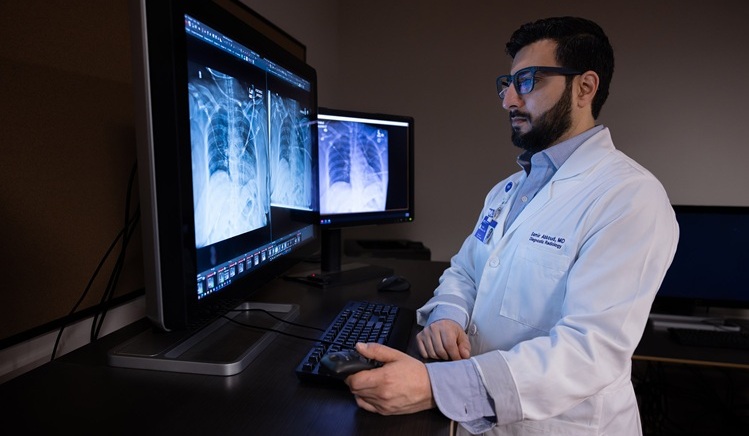
AI Radiology Tool Identifies Life-Threatening Conditions in Milliseconds
Radiology is emerging as one of healthcare’s most pressing bottlenecks. By 2033, the U.S. could face a shortage of up to 42,000 radiologists, even as imaging volumes grow by 5% annually.... Read more
Machine Learning Algorithm Identifies Cardiovascular Risk from Routine Bone Density Scans
A new study published in the Journal of Bone and Mineral Research reveals that an automated machine learning program can predict the risk of cardiovascular events and falls or fractures by analyzing bone... Read more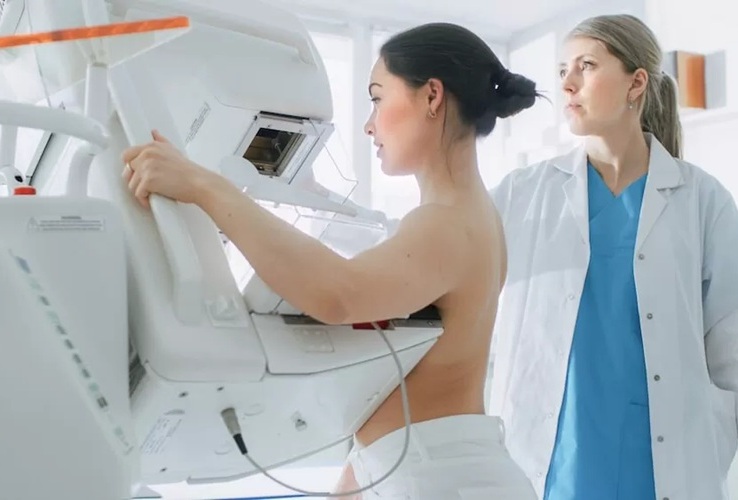
AI Improves Early Detection of Interval Breast Cancers
Interval breast cancers, which occur between routine screenings, are easier to treat when detected earlier. Early detection can reduce the need for aggressive treatments and improve the chances of better outcomes.... Read more
World's Largest Class Single Crystal Diamond Radiation Detector Opens New Possibilities for Diagnostic Imaging
Diamonds possess ideal physical properties for radiation detection, such as exceptional thermal and chemical stability along with a quick response time. Made of carbon with an atomic number of six, diamonds... Read moreMRI
view channel
New MRI Technique Reveals Hidden Heart Issues
Traditional exercise stress tests conducted within an MRI machine require patients to lie flat, a position that artificially improves heart function by increasing stroke volume due to gravity-driven blood... Read more
Shorter MRI Exam Effectively Detects Cancer in Dense Breasts
Women with extremely dense breasts face a higher risk of missed breast cancer diagnoses, as dense glandular and fibrous tissue can obscure tumors on mammograms. While breast MRI is recommended for supplemental... Read moreUltrasound
view channel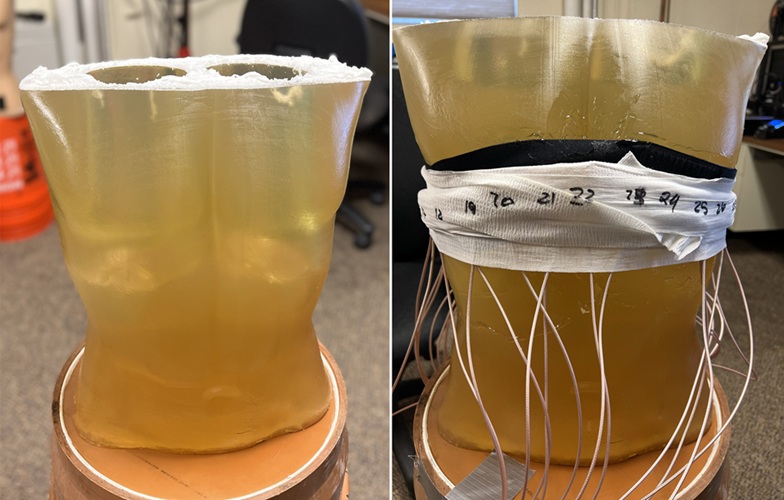
New Medical Ultrasound Imaging Technique Enables ICU Bedside Monitoring
Ultrasound computed tomography (USCT) presents a safer alternative to imaging techniques like X-ray computed tomography (commonly known as CT or “CAT” scans) because it does not produce ionizing radiation.... Read more
New Incision-Free Technique Halts Growth of Debilitating Brain Lesions
Cerebral cavernous malformations (CCMs), also known as cavernomas, are abnormal clusters of blood vessels that can grow in the brain, spinal cord, or other parts of the body. While most cases remain asymptomatic,... Read moreNuclear Medicine
view channel
New Imaging Approach Could Reduce Need for Biopsies to Monitor Prostate Cancer
Prostate cancer is the second leading cause of cancer-related death among men in the United States. However, the majority of older men diagnosed with prostate cancer have slow-growing, low-risk forms of... Read more
Novel Radiolabeled Antibody Improves Diagnosis and Treatment of Solid Tumors
Interleukin-13 receptor α-2 (IL13Rα2) is a cell surface receptor commonly found in solid tumors such as glioblastoma, melanoma, and breast cancer. It is minimally expressed in normal tissues, making it... Read moreGeneral/Advanced Imaging
view channel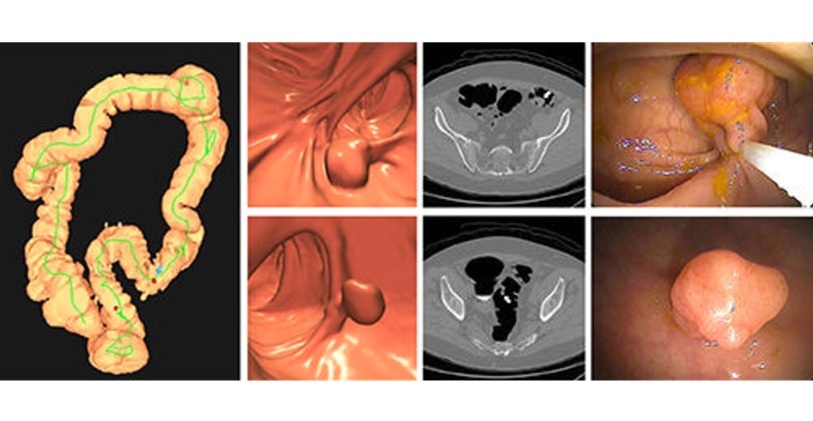
CT Colonography Beats Stool DNA Testing for Colon Cancer Screening
As colorectal cancer remains the second leading cause of cancer-related deaths worldwide, early detection through screening is vital to reduce advanced-stage treatments and associated costs.... Read more
First-Of-Its-Kind Wearable Device Offers Revolutionary Alternative to CT Scans
Currently, patients with conditions such as heart failure, pneumonia, or respiratory distress often require multiple imaging procedures that are intermittent, disruptive, and involve high levels of radiation.... Read more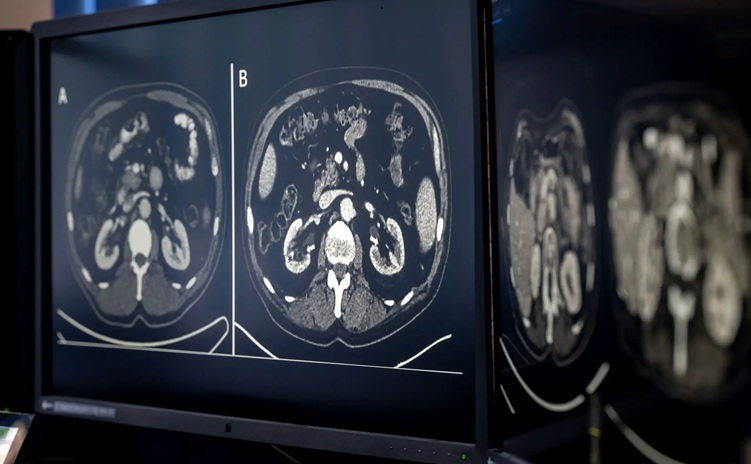
AI-Based CT Scan Analysis Predicts Early-Stage Kidney Damage Due to Cancer Treatments
Radioligand therapy, a form of targeted nuclear medicine, has recently gained attention for its potential in treating specific types of tumors. However, one of the potential side effects of this therapy... Read moreIndustry News
view channel
GE HealthCare and NVIDIA Collaboration to Reimagine Diagnostic Imaging
GE HealthCare (Chicago, IL, USA) has entered into a collaboration with NVIDIA (Santa Clara, CA, USA), expanding the existing relationship between the two companies to focus on pioneering innovation in... Read more
Patient-Specific 3D-Printed Phantoms Transform CT Imaging
New research has highlighted how anatomically precise, patient-specific 3D-printed phantoms are proving to be scalable, cost-effective, and efficient tools in the development of new CT scan algorithms... Read more
Siemens and Sectra Collaborate on Enhancing Radiology Workflows
Siemens Healthineers (Forchheim, Germany) and Sectra (Linköping, Sweden) have entered into a collaboration aimed at enhancing radiologists' diagnostic capabilities and, in turn, improving patient care... Read more










 Guided Devices.jpg)

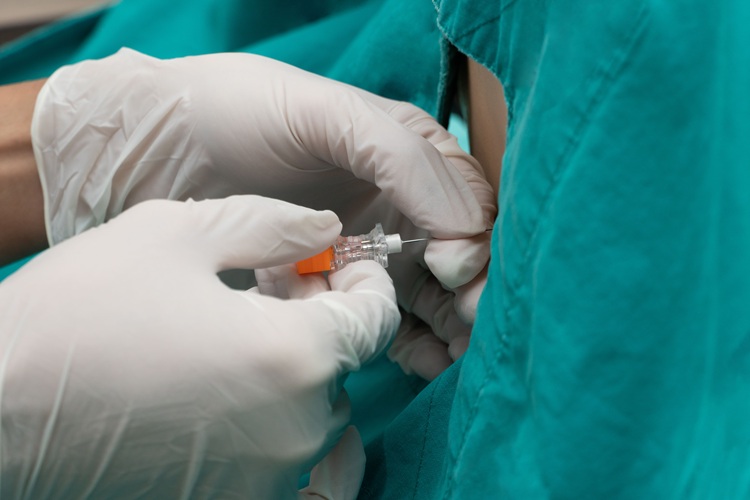
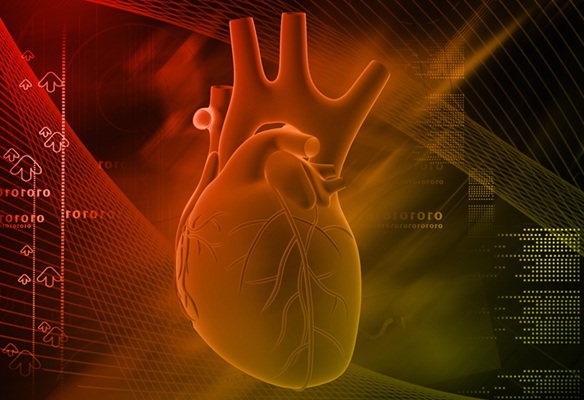
.jpeg)



